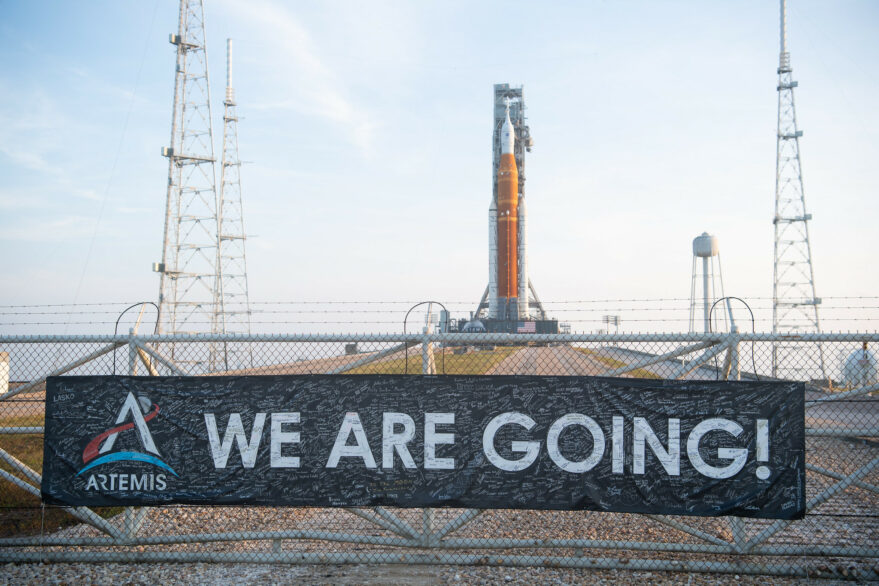
PARIS — Days after NASA proposed to make its next attempt to launch the Artemis 1 mission on Sept. 23, the agency changed course and pushed back the launch.
At a Sept. 8 briefing, NASA said it was tentatively planning to fly the Space Launch System and Orion spacecraft as soon as Sept. 23, with Sept. 27 as a backup launch date. That scheduled depended on completing and testing repairs to seals in liquid hydrogen lines that attach to the rocket’s core stage, as well as getting approval from the Eastern Range to extend the certification of the flight termination system (FTS) on SLS.
In an update late Sept. 12, however, NASA said it dropped plans for a Sept. 23 launch. The agency said that date was no longer feasible after delaying a tanking test to confirm the new seals are working properly from Sept. 17 to Sept. 21.
“The updated dates represent careful consideration of multiple logistical topics, including the additional value of having more time to prepare for the cryogenic demonstration test, and subsequently more time to prepare for the launch,” NASA said in a statement. It also allows more time to replenish supplies of liquid hydrogen and liquid oxygen at the pad and give launch teams enough rest.
The earliest launch opportunity is Sept. 27, NASA said, with a potential backup launch date of Oct. 2. That backup date remains under review as the agency continues to plan to launch a new crew to the International Space Station on SpaceX’s Crew-5 commercial crew mission on Oct. 3 from Launch Complex 39A, next to the SLS at Launch Complex 39B at the Kennedy Space Center.
The Sept. 27 launch window opens at 11:37 a.m. Eastern and lasts for 70 minutes; a launch that day would set up a splashdown of the Orion spacecraft in the Pacific Ocean Nov. 5. The Oct. 2 launch would take place during a 109-minute window that opens at 2:52 p.m. Eastern, setting up a splashdown Nov. 11.
In its statement, NASA said technicians completed replacement of seals on the two liquid hydrogen lines and reconnected them to the core stage. The seals will be tested at ambient temperatures this week before the rescheduled cryogenic tanking test next week.
Even if the tanking test is successful, NASA will not be able to proceed with a launch without rolling back to the Vehicle Assembly Building to recertify the FTS unless the Eastern Range grants a waiver to its certified lifetime, which expired Sept. 6.
NASA said that the Eastern Range is still evaluating NASA’s request for a waiver. “NASA is continuing to respect the Eastern Range’s process for review of the agency’s request for an extension of the current testing requirement for the flight termination system and is providing additional information and data as needed.”
Related
ncG1vNJzZmiroJawprrEsKpnm5%2BifKK%2B056koqtdZnqtrdSnmqFloKGur7%2BMrKOiqF2WtKK1zWg%3D